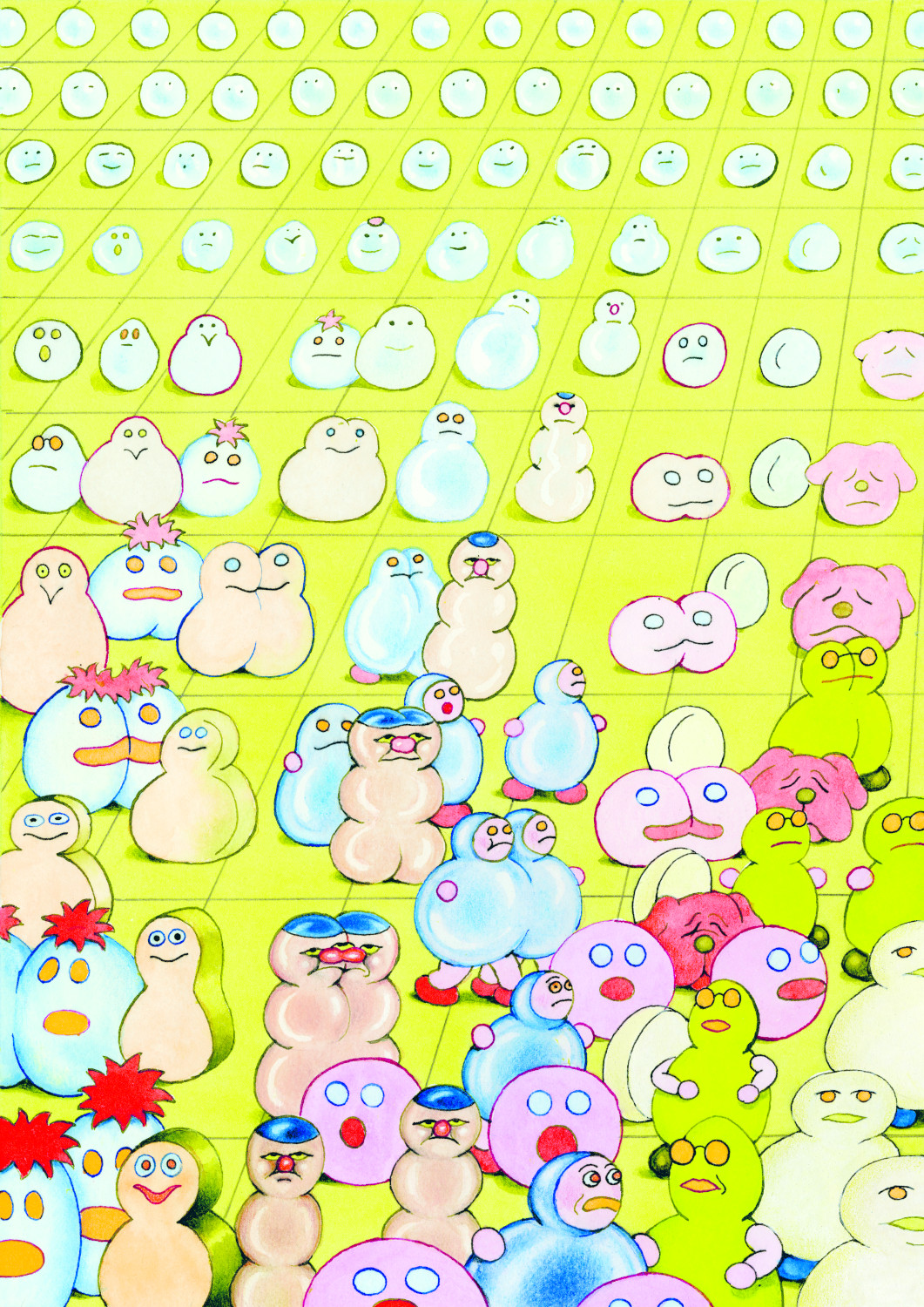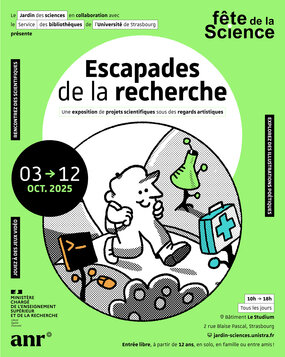Fête de la Science 2025 came up with a new way in which research can interact with the society by showing its (sometimes weird) beauty, provoking debate and creative thinking, and changing the perspective on the world around us. The key ingredient is Art! Jardin des Sciences brought together scientists and artists to catalyse a creative exchange between them: researchers explained their projects, while professional illustrators used them as a source of inspiration in their own work. The result is the amazing exhibition Escapades de la Recherche that took place in Le Studium in October 2025!
Our projects on experimental evolution featured at Escapades de la Recherche 2025
Alexandre Smirnov's projects on experimental evolution in microbes, supported by USIAS and ANR, were among the 12 works selected for this unique experiment!

"If you asked "What is evolution?", what would be a microbiologist's answer? They could say that evolution is transformation of living beings in time driven by diverse biological mechanisms, such as mutations and natural selection. They could then talk about genetics and explain you that organisms' DNA constantly undergoes random changes (mutations), and that some of them are retained, giving an advantage to individuals and, in the long run, contributing to the transformation of the entire species. In the lab, Alexandre Smirnov and his team use the rules of evolution to observe how living beings change with time et how they adapt to new life conditions. To this end, they work on microorganisms. Bacteria reproduce very quickly and permit scientists to observe results of their experiments. One of their projects consists in depriving bacteria of the ability to produce a specific protein that is important for their functioning, effectively crippling them. The researchers then follow for 1000 generations how such bacteria evolve to solve this problem. With experimental evolution, scientists create controlled laboratory conditions, challenge microorganisms and... wait to see how these living beings find solutions. This is how they further our understanding of what exactly is evolution!" (Jardin des Science)
"Samuel Bas seized the very essence of experimental evolution: it is well-rhythmed, with a sensation of unfolding - but also that of the loss of control when everything starts to spiral into an overwhelming diversity of lifestyles coexisting in one and the same tube. The greenish yellow of the background evokes burgeoning life but also the culture medium. This is an unstable, even disturbing colour - just like evolution itself!" (Alexandre Smirnov)

